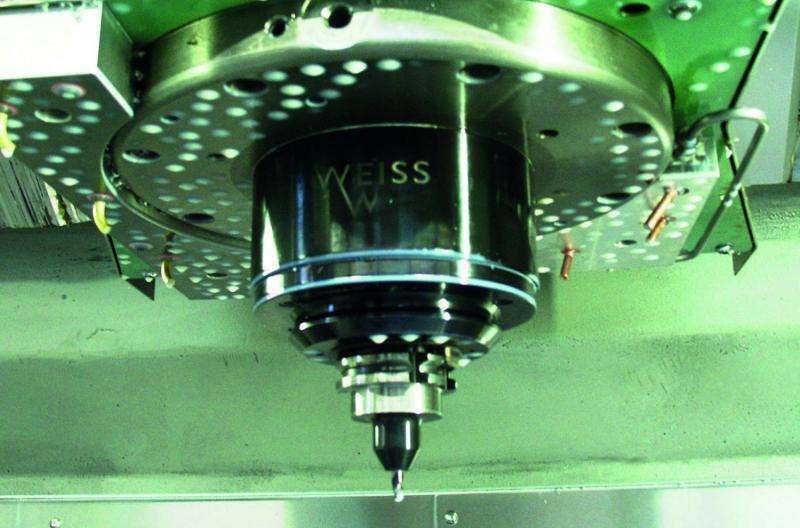Every drill bit counts

Currently, factories work on a principle of "one size fits all" when it comes to replacing or regrinding tools such as drill bits, milling machines or planes after a specified period of time – whether they need it or not. Not only does this unnecessarily increase the time spent on maintenance, it is expensive, too. In the "Cute Machining" project, researchers from the Fraunhofer Institute for Microelectronic Circuits and Systems IMS in Duisburg are working on the issue by creating individual tool "service records" and employing a new communication technology that uses RFID tags. The aim is to optimize productivity, quality, throughput time and inventory in the manufacturing operations of the Industrie 4.0 era.
Machining is a core element of the manufacturing process, whether it's drilling, milling, turning or planing. Not only the workpiece sheds material, however: these processes also lead to gradual wear on the tool. The decision on when to have a tool replaced or reground depends on its service life. This is far from easy to determine, however, on account of the differing circumstances to which each individual tool is exposed. A tool's properties are easy enough to calculate, but the impact of machine settings, which are usually left to the employee, has been unquantifiable to date. As a result, a tool's service life can vary by around 25 percent. In a bid to avoid downtime and damage to workpieces, tools often end up being exchanged too early – and this can push costs up by as much as 50 percent.
RFID tags enable uninterrupted operations
The key to success – and more tool productivity – is to be able to determine each individual tool's maximum possible service life. This means factoring in a range of parameters, including the nature of the cutting operation, employee settings and the workpiece material. The solution is to create an individual tool service record that details every event in the time a tool has been in service. This data is then fed into a special management tool to create a digital twin of the tool, which lets users determine exactly when a tool must be serviced or replaced. But how to get the data from the tool to the management tool? Manual reading is not an option. Not only would it disrupt operations, but tools are often located in hard-to-access areas. On top of this, the surroundings tend to be highly metallic and therefore disruptive of conventional communication techniques, ruling these out.
In response, researchers at Fraunhofer IMS have developed a new RFID technology. The new transponders operate at a frequency of 5.8 GHz and can be read from up to a meter away even in the tricky metallic environment of a production plant. This allows for effective communication between tools and the management database. Since the RFID transponders take up an area of less than 5 mm2, they can be easily installed on tools' surfaces.
New applications for Industrie 4.0
For companies embracing the era of Industrie 4.0, the technology goes beyond making maximum use of their tools. "A big part of Industrie 4.0 is how it collects data to facilitate a production process as transparent as possible. That's exactly what we're doing with this new solution," says Dr. Gerd vom Bögel, head of the Wireless & Transponder Systems business unit at Fraunhofer IMS. "Of course, the first step is to identify the tool, but as the project continues the sensors could also be used to provide information about a tool's environment as well as about the tool itself. That's what makes it possible to monitor processes in real time, make them more transparent and, ultimately, more effective."
What is more, the technology could also be employed in other areas of Industrie 4.0. One option would be to equip all physical assets, including tools, workpieces, machines or vehicles, with RFID tags – thereby providing even more information. This could then be used to identify further potential for optimization.
In addition to Fraunhofer IMS, the project consortium comprises the technology companies CIMSOURCE GmbH and PROMETEC Gesellschaft für Produktions-, Mess- und Automatisierungstechnik mbH, ID4us GmbH, the Heinz Nixdorf Institute of the University of Paderborn and the application partner Sandvik Coromant. The "Cute Machining" project is supported by the German state government of North Rhine-Westphalia and the EU as part of the "EFRE-NRW" program.
Provided by Fraunhofer-Gesellschaft




















